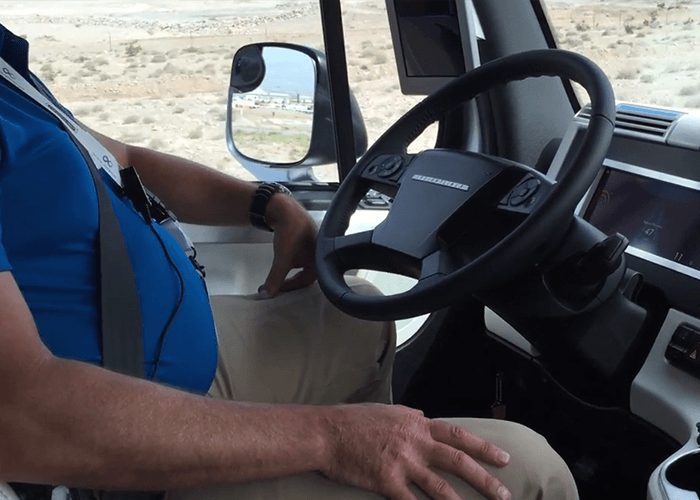FMCSA to study how human truckers interact with automated driving technology

The Federal Motor Carrier Safety Administration (FMCSA) will conduct a study to gather information on how quickly and effectively human drivers can respond when they’re asked to take over for an automated driving system.
In a notice to be published in the Federal Register September 21, the FMCSA announced plans to conduct a study of 100 CMV drivers using a driving simulator to “examine the effect of non-driving secondary task engagement, transfer of control, and training on driver behavior in Automated Driving System (ADS)-equipped CMVs.”
The FMCSA cites a lack of data on trucks equipped with ADS and a need for more information to understand driver behavior and policy implications.
The agency said that when truckers are behind the wheel in vehicles with lower-levels of driving automation (including L2, which is partial automation or L3, which is conditional automation), they are in an “environment that is ripe for over-reliance.”
From the Federal Register Notice:
“An L2 vehicle offers longitudinal and lateral support to the the driver is still responsible for driving at all times. At this level, engaging in tasks can be to driving performance as the driver may not recognize and respond to or appropriately. In an L3 vehicle, the role of distraction is blurred. The driver takes on a more supervisory role and is in full control of the vehicle in a of situations. When an L3 vehicle alerts the driver that a takeover is required, the driver needs to have to resume full control of the vehicle. Engagement in non-driving secondary tasks may prevent the driver from maintaining situational awareness of the driving environment.“
Through the study, the FMCSA hopes to:
- Determine the effect of distraction on CMV drivers of L2 vehicles
- Determine the effect of transfer of control on CMV drivers in L3 vehicles
- Develop and evaluate a training program that is designed to decrease the levels of distraction that were identified in CMV drivers in L2 vehicles and designed to improve the problems with the transfer of control that were identified in L3
The FMCSA will accept public comment on the planned study. You’ll be able to submit a public comment online at this link when the notice is published on September 21.